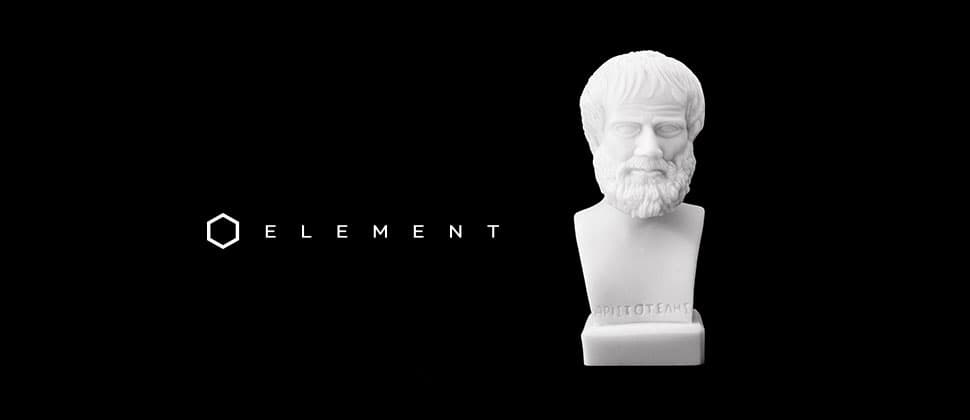Can an ancient Greek philosopher teach us how to be better at marketing?
Just about everyone comes across Aristotle’s writings Poetics and Rhetoric at some point during high school or college.
If you were like me at that age, you probably didn’t appreciate the subject matter, but Aristotle literally wrote the book on using stories to persuade people.
Smart marketers can learn a thing or two from Aristotle, especially when trying to create compelling and convincing content for your target audience. And, you don’t have to be a literature or philosophy major to understand how it all works.
There is some amazing advice in Poetics, specifically on writing tragedies. Aristotle also wrote about comedy and satire. Unfortunately, that part of this work has been lost. Too bad, I’m sure it was a laugh riot.
Rhetoric is where Aristotle truly lays down the foundation for the art of persuasion. In fact, many scholars consider it the first and most important work on persuasion ever written.
While Rhetoric was written with public speakers in mind, it’s really about powerful communication in general. Remember, the internet makes it possible for any business or individual to communicate with an audience. We all have platforms that make it possible to reach people all over the world.
The questions is … how will you use that platform to its full potential?
In Poetics and Rhetoric, Aristotle uses many different terms from ancient Greek philosophy that we still use to define principles of drama, literature, and public speaking today.
For this post, we’re going to focus on three of the most-familiar terms: logos, ethos, and pathos. These are referred to as “Aristotle’s three modes of persuasion.”
Here’s what they mean and how they can be applied to marketing and brand storytelling.
Logos – An Appeal to Reason and Logic
The word logos is often interpreted to mean “discourse.” Aristotle’s more specific view defines logos as “reasoned discourse” or “the argument.”
In marketing, this would involve making a logical case for choosing your company’s product or service over a competitor’s. You explain the features and benefits of an offer so that it makes complete sense to a customer.
Logos shows how the solution your business provides is obviously the logical answer.
You can weave logos into brand storytelling with content that contains real-life examples, backing up any claim with hard numbers and authoritative research.
Case studies are a good example of brand storytelling that uses logos to persuade. A case study is content that provides a real-life success story, which is backed up by statistics. Infographics are another way to display logos in content marketing. You take stats and turn them into a visually appealing story that supports you in your efforts to persuade customers.
Providing people with logical reasons to choose your company is an essential part of persuasive marketing.
The problem with thinking logically is that means your prospect may also be thinking skeptically. In other words, they’re probably looking for a reason not to buy from you. That’s a problem.
However, most of us don’t make purchasing decisions based solely on logic. Potential customers also need to trust you, see what you stand for, and view you as a respected authority.
That’s where ethos comes in …
Ethos – An Appeal to Character and Ethics
Ethos is a Greek word meaning “character.” It represents your organization’s guiding beliefs as well as its public reputation.
Ethos has a lot to do with branding, which is much more than having a recognizable logo and tagline. It’s the way people view your company. Ethos is about credibility and the ethics or principles your company follows.
Content marketing is an excellent way to establish your company’s expertise. When you create content that gives prospects valuable advice and guides them on a path to purchase, you are building trust and forming relationships that will lead to customer loyalty.
Public relations can help you manage a company’s reputation while taking advantage of opportunities to show the world what your business stands for and how it’s accomplishing its mission.
But wait!
You need an actual mission in the first place. You need to have beliefs. You need something to stand for.
Business writer, Simon Sinek, calls it finding your organization’s “Why.” Sinek authored a book called Start with Why, and delivered a popular TED Talk explaining this concept.
The “Why” of your company is its reason for existing. “What” is the product or service you offer. “How” is the way you do it. But, Sinek says the “Why” is the real deciding factor.
“People don’t buy what you do, they buy why you do it.” ~ Simon Sinek
Watch Simon Sinek’s 2009 TED Talk
A company’s “Why” tells a story.
In fact, it should be at the core of every story you tell.
There are other things that can build upon the credibility of your company: customer testimonials, a proven track record, recommendations from peers in your industry.
While often out of your control, these are stories of ethos, too. However, these outside stories only happen naturally when you and the people you work with understand the reason your organization exists.
In the end, your company’s ethos all boils down to its “Why.”
Pathos – An Appeal to Human Emotion
Pathos is all about emotion, and it’s probably the most powerful and persuasive tool in your storytelling toolkit.
In Rhetoric, Aristotle explains pathos as the persuasive strategy of “awakening emotion” in people so they make the decision you’re trying to convince them to make.
You probably forget most of the commercials you seen on television. But, there are some that stick with you, and you may even call your “favorite commercial.”
Why is that?
Chances are pretty good that you made some sort of emotional connection to that advertisement. It made you laugh, brought a tear to your eye, or stirred up some righteous anger.
Aristotle called the result of evoking an intense emotion “catharsis,” and he writes about it in detail in Poetics. Catharsis means purification or cleansing, and is sometimes described as a purging of emotion, which renews the person having the cathartic experience.
Think about how you feel after a good cry, or laughing so hard you lose control. Even releasing your frustration can leaving you feeling cleansed. That’s a catharsis!
If you can make marketing that creates a catharsis, you’ve hit the jackpot.
As much as we’d like to believe we make sensible, logical decisions using nothing but reason – it’s not true. We almost always make choices based on how we feel, and we use logic to justify our emotional decisions.
What that means is, while you need logos in your brand storytelling, it’s real function is to make us feel like we’re being smart. The truth is – we’re pursuing what our emotions want us to pursue.
An article by Dr. Peter Noel Murray in Psychology Today points to well-documented studies strongly suggesting that consumer behavior is dictated by emotion.
“Advertising research reveals that emotional response to an ad has far greater influence on a consumer’s reported intent to buy a product than does the ad’s content – by a factor of 3-to-1 for television commercials and 2-to-1 for print ads.”
Here’s a true story that surprised me … without using emotions, it might even be impossible for us to make decisions at all!
Renowned psychiatrist, neuroscience professor, and author, António Rosa Damásio, had a patient named Elliot who was once described as an outgoing, energetic lawyer. According to an article on ISPO.com, after undergoing brain surgery, he found himself mentally incapacitated – unable to make the smallest decisions. He couldn’t even pick a radio station or choose which pen to use.
Damásio diagnosed Elliot with extreme emotional suppressions as a result of his surgery. Elliot couldn’t feel any emotion. Damásio theorized that’s also the reason why he was unable to make decisions. Even though his IQ was the same, his emotions weren’t able to tell his brain what to choose.
Logos, Ethos, and Pathos – Can You Combine Them?
If you really want to take brand storytelling to its full potential, try to make marketing that uses all three of Aristotle’s means of persuasion.
Use logos. Make sure to provide sound reasoning that makes sense to your audience. An emotional story that’s completely outlandish will be unbelievable and won’t be persuasive.
Use ethos. Tell stories that reflect the reason why your company exists. Build up credibility and trust, then use your reputation to your advantage. Experts are much more believable than amateurs.
Use pathos. Push those emotional buttons of pain and pleasure, joy and sadness, fear and security. Don’t forget that humans are highly irrational beings. People want to do what the heart tells them – and usually they do.
Finally, try to create a catharsis. Evoke a climactic emotional release in your target audience with a story they can relate to.
Element employs talented and creative people who can help you tell these kinds of stories. From brand strategists and art directors to copywriters and video producers – we have the tools and talent to make your marketing more persuasive. Contact us today!











